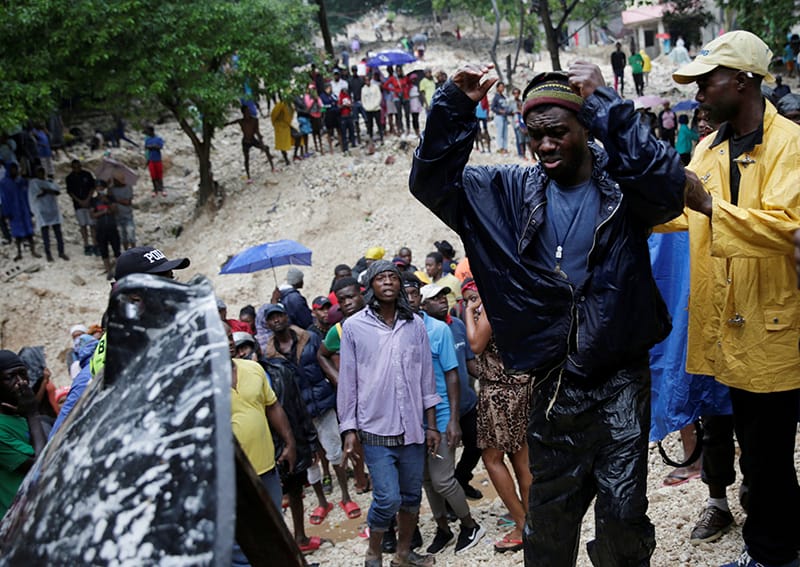
CLEVELAND (CNS) — Officials reported that at least 12 people had died as Tropical Storm Laura lashed Haiti and the Dominican Republic with strong winds and torrential rains, causing widespread flooding in low-lying communities.
The dead included at least nine in Haiti, according to the country’s civil protection agency. Three others died in the Dominican Republic, authorities there said.
Laura also lashed Puerto Rico Aug. 22, knocking out power to 100,000 customers. The island territory of the United States continues to recover from a devastating hurricane in 2017. The storm had moved over Cuba’s southern coast by Aug. 24.
Father Enrique Comacho, executive director of Caritas Puerto Rico, which is affiliated with Catholic Charities USA, said he was checking with parishes in southern and eastern areas of the island, which were the most seriously affected by Laura, to assess how best to respond.
Reports of damage in Haiti and the Dominican Republic on the island of Hispaniola were sporadic Aug. 24. The most serious damage in Haiti was centered in the country’s Southeast and West departments and in the agricultural area in Artibonite department.
Christopher Bessey, country representative in Haiti for Catholic Relief Services, said the agency was working with local partners and Haiti’s civil protection authority to assess damage and determine where aid was most needed.
Flooding in some areas posed the most serious challenges, he said.
“I think the country came through the storm fairly well. It was definitely worse than we were hoping and worse than we were anticipating. We thought the storm would stay a little further north, but it stayed right on the island,” Bessey told Catholic News Service.
CRS and local partner agencies were expecting to implement cash transfer program to aid vulnerable families funded through the U.S. Agency for International Development in the most seriously affected communities, especially those where crops where washed away, he said.
“CRS staff is working with the local partners and the government to look at what the level of damage is and if it requires a response and making sure resources are available from the appropriate sources,” Bessey said.
Haiti already was facing long-standing political instability with periodic protests against the regime of President Jovenel Moise. The political challenges have been compounded by a growing economic emergency as the Haitian gourde has lost value against the American dollar, making prices for necessities more expensive.
The coronavirus pandemic has led to an overnight curfew in the country in an effort to stem the spread of COVID-19.
Moise said Aug. 23 that in addition to the deaths in his country at least two people were missing. In a tweet he offered words of condolence to the families who lost members in the storm.
“I urge the population to respect the instructions of the authorities to protect themselves from the damage that this bad weather could cause,” he said.
Power also was knocked out across a wide area of the Dominican Republic.
Forecasters at the National Hurricane Center projected that Laura would strengthen into a hurricane as it moved into the southeastern Gulf of Mexico. It was expected to make landfall along the Texas-Louisiana border Aug. 27.
Meanwhile, Tropical Storm Marco was nearing the same region of the Gulf Coast Aug. 24. Tropical storm warnings were issued for a small portion of Alabama, Mississippi and Louisiana.
Marco, which had reached hurricane level Aug. 23, was expected to continue weakening as it moved westward toward the Texas coast.









